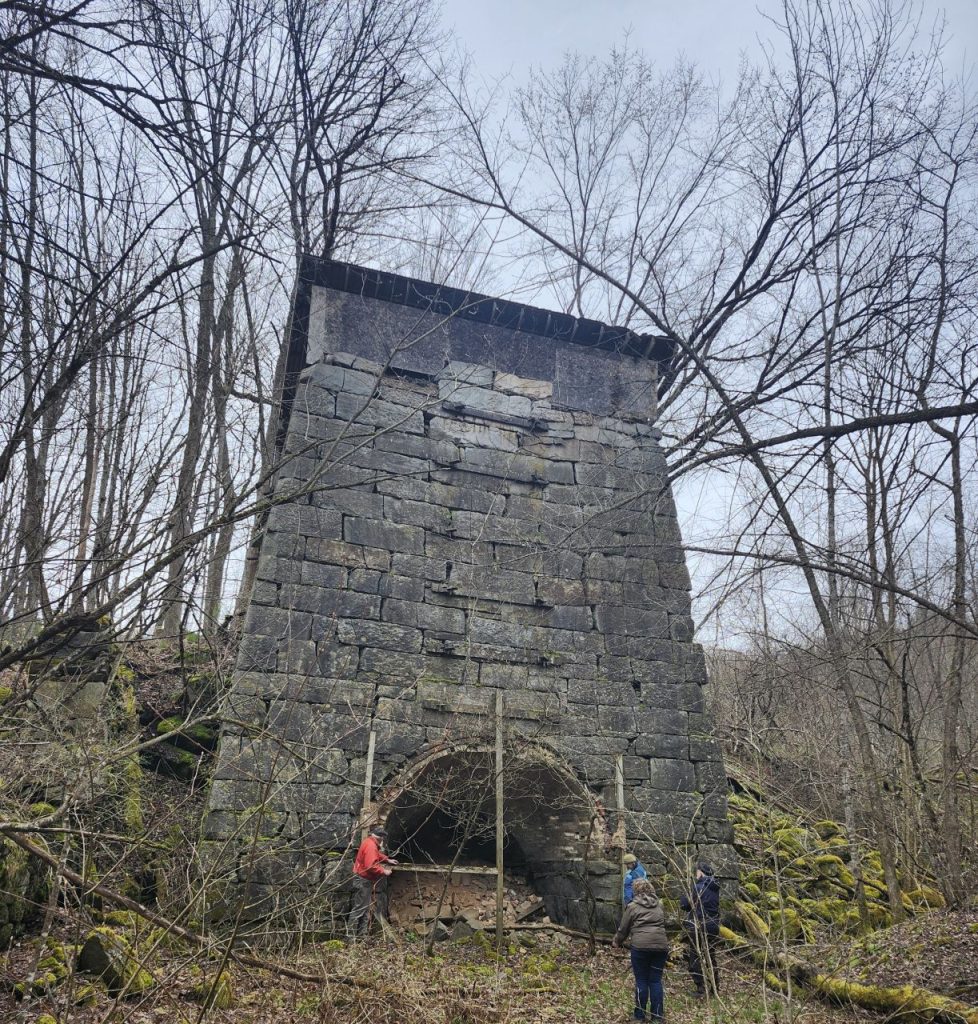
April 20, 2024 was cool and a little cloudy as 14 Chittenden Historical Society members and guests gathered on the property of John Bodin and family to tour the remains of the Mitchell Iron Ore beds. The beds themselves little resemble the very active industry now. Much to the disappointment of the youngest members it is not possible to climb down in them.
According to the book, Chittenden, Vermont, A Town History, the Mitchell iron ore bed contained enough iron ore to influence compass needles. Workers mined nearly 600 tons of iron ore annually. Teamsters hauled the three-ton loads of iron ore via horse-drawn freight two times a day to the Granger Forge in Pittsford, Vermont three miles away. Today’s members could see little evidence of the immense operation but John Bodin pointed out a small brook where a bed and trench had been. Observers could see a dark, brown color to the brook water along with foam demonstrating that the water was going through old iron.
A smaller group made the short drive to the Granger Forge site in Pittsford. The group marked the presence of Furnace Brook that was used to cool operations, then walked a short, pleasant distance to the forge site. Parts of the forge are still there and demonstrate how very large it was in its heyday. It was very tempting, but not advisable, to climb up into the forge. A local Pittsford participant said that when she was a girl it was very common to find turquoise blue shiny “rocks” in the brook. These contaminates discarded from the smelting process. Members of the group did not find any of the turquoise blue, royal blue or green “rocks”.
All in all a great day of learning, wonder and friendship.





